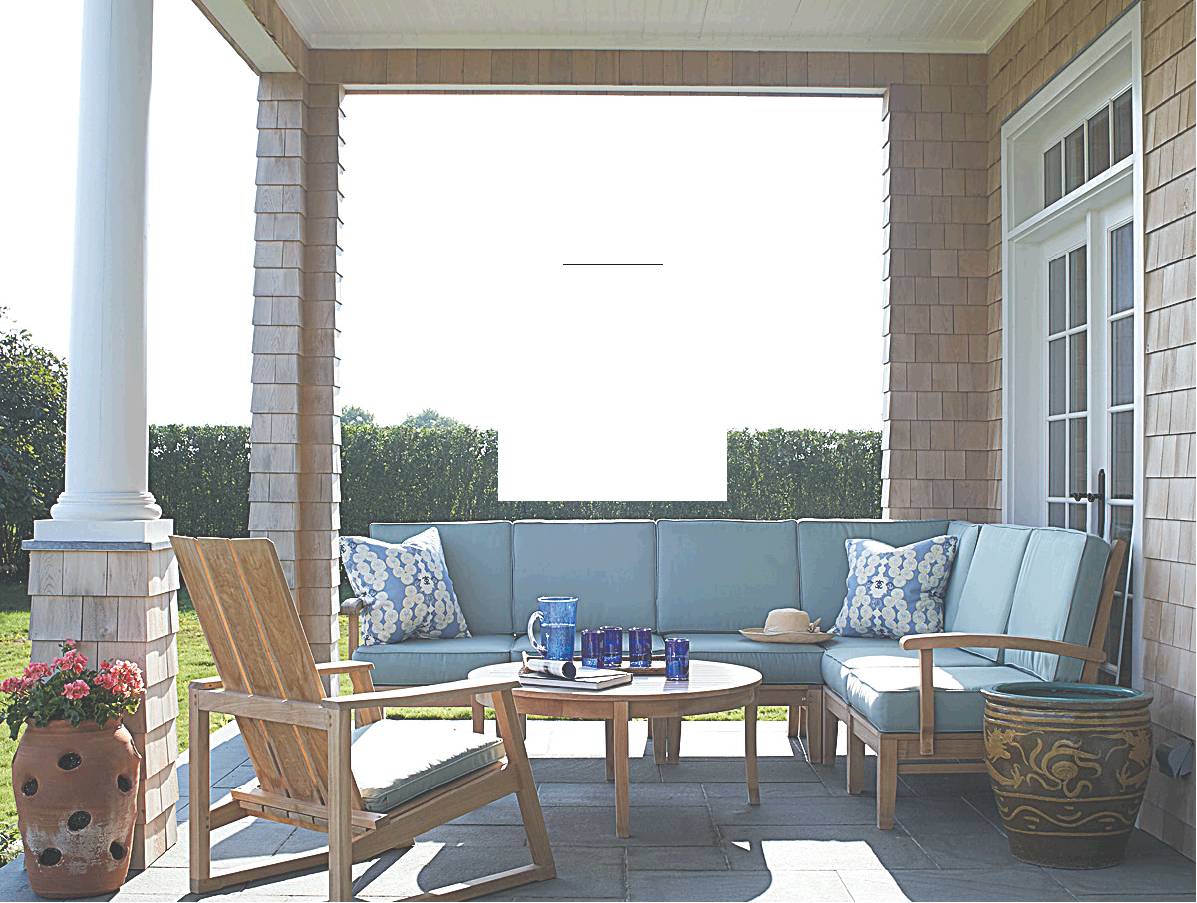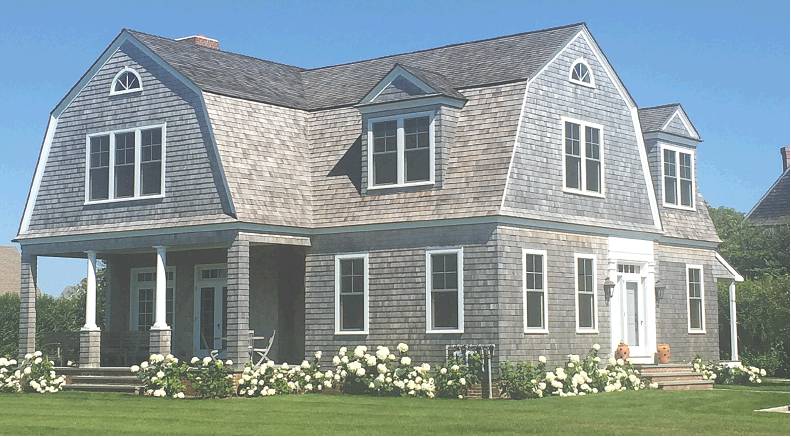Fashion & Decor STYLEHAMPTON
A Designer’s Vision For His Sister’s Summer Getaway
By sTeVen sTOLMAn
It’s a familiar conundrum. One member of a family is accomplished at something. Another has a need for that skill set.
It could be asking one’s sister, the doctor, for health advice or one’s brother, the attorney, for legal assistance. God help the poor real estate agents or contractors who, out of familial responsibility, guilt, or both, find themselves having to drop everything to assist a sibling in need. That’s what family is for, right?
Those who have experienced this dynamic are nodding as they read this. There are success stories, and there are others that would qualify for the more tawdry aspects of HGTV or worse, a designer’s “nightmare client” list, which even the most tightlipped of designers will eventually admit to having.
The designers who earn the greatest respect from clients and peers alike are the ones who are not only maestros of fit, finish, function, process and, above all, taste, but are also adept observers and listeners. Most important is a sensitivity to how folks actually live, what their priorities are, and the elements of their lives that deserve incorporation into their homes. Working for a close sibling can definitely be an advantage here, as growing up under the same roof for any significant amount of time lays some critical groundwork.
Such was the case when designer Stewart Manger — whose resume includes stints at such august firms as David Easton, David Kleinberg Design Associates and Bunny Williams Interiors before going out on his own in June 2016 — was approached by his sister, Lala, for a significant project: the construction and decoration of a house adjacent to the home in which she and her three brothers summered.
The Manger family home, Top O’Dunes, is part and parcel to the Southampton story. Built in 1890 and purchased by Mr. Manger’s parents, Lynn and Bill Manger, in 1960, the main house is the oldest beach house in Southampton, hugging the dunes at the end of a private road off Gin Lane. It underwent a sensitive restoration led by the late architect Francis Fleetwood in 1999, which included the conversion of staff rooms into individual suites. The strategy was a good one; Mr. Manger continues to live in the house along with his brothers, Bill and Charles, without getting in each other’s way. “Together but separate,” is how he describes the cohabitant arrangement.
In the early 1970s, however, the Mangers wished to build a swimming pool on the neighboring vacant lot that they also owned. “The village said, ‘You can’t build a pool on a vacant lot!’” Mr. Manger recalled. So they commissioned a modest four-bedroom ranch-style house. It served its purpose well for nearly four decades, sometimes for overflow guests, at other times rented out to family friends for the summer. In 2010, Lala and her family (husband Porter and three children, now in their 20s) were ready for their own beach getaway. Due to updated building codes, including FEMA regulations, it became clear that a totally new house was the way to go. The 1970s ranch was demolished without fanfare, as what would ultimately replace it was so carefully considered. A Vermont-based homebuilder, one that the Mangers had worked with on their own ski house, was engaged along with a local contractor. Mr. Manger was delighted to take on the project, even though he freely admits that the biggest challenge was “having your own family as the client.” Still, he says it was “smooth sailing.” The new house, a classic shingle-style Dutch colonial, was designed to complement Top O’Dunes. It has all of the bells and whistles young families now expect — generous ceiling heights and that all-important open plan, along with gracious verandas. “I love the great room,” he said. “You just can’t get 10-foot ceilings in old houses.”
The interiors reflect his mastery of the updated traditional style of décor, reenergizing some existing pieces with new upholstery and adding new elements that range from classical to contemporary.
“There’s a lot of high-low,” he said. In the great room, painted a custom shade of café au lait, the French doors leading out to the veranda are dressed with a Scalamandré striped linen for a fresh, breezy feel. The seating area is grounded by a flat weave dhurrie rug from Madeline Weinrib. A parchment-wrapped coffee table from Julian Chichester adds a contemporary edge, while the whole room is chic-ified by an iconic Pierre Jeanneret chair covered in genuine cowhide. Of course, given that this is truly a quintessential Hamptons beach house, the veranda is the heart of the home. The teak seating is by Country Casual, with cushions covered in seafoam weather-resistant Sunbrella canvas. Accent pillows are in a blue and white printed linen/cotton blend from the China Seas division of Quadrille Fabrics.
When asked how the pandemic has affected his business, Mr. Manger replied, “When I set up my office four years ago, it was done with the ability to work remotely from the get-go. So my team and I have been able to continuously operate. Thankfully, our job sites that were shut down are opening as we speak.”
Considering that the home furnishings sector is one of the few industries that has experienced upward activity despite COVID-19, and that his office for the duration has been the breakfast room at Top O’Dunes, with its spectacular view of the ocean, the current state of Stewart Manger’s world is pretty darn sweet.




